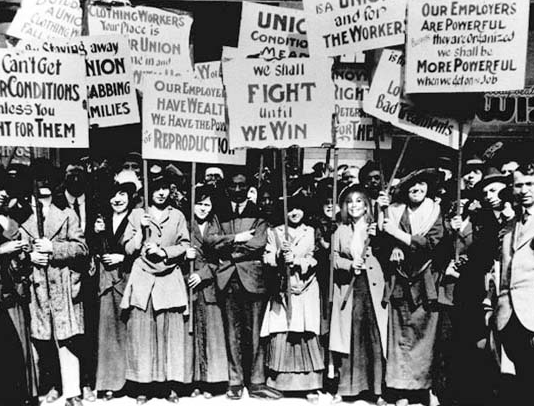Women’s history! The number of books and resources is…well, overwhelming. And they’re not just for girls.
See below for some great picks in Herstory, Suffragists: Fighting for Rights, Trailblazing and Triumphs, and Stories (and Poems) about Brave Women and Strong Girls.
Table of Contents
HERSTORY
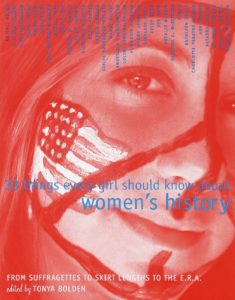
|
33 Things Every Girl Should Know About Women’s History: From Suffragettes to Skirt Lengths to the E.R.A. (Crown, 2002), edited by Tonya Bolden, is a beautifully designed overview of women’s history, packed with photos, essays, quotes, timelines, bios, poems, and short stories, covering a wide range of compelling issues. Included, for example, are an excerpt of Charlotte Perkins Gilman’s “The Yellow Wallpaper” and Abigail Adams’s famous “Remember the Ladies” letter. For ages 12 and up. |
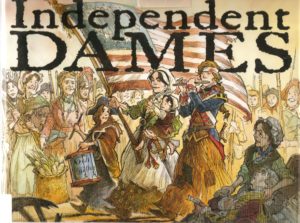
|
By Laurie Halse Anderson, Independent Dames (Simon & Schuster, 2008) is a graphically dense overview of women of the American Revolution. Included are a running timeline, a dazzling array of facts, cartoon illustrations with humorous dialogue balloons, and capsule biographies of 22 women, among them Martha Washington, Deborah Sampson, Sybil Ludington, and Margaret Corbin – who was wounded while firing a cannon, and became the first woman in America to be awarded a military pension. For ages 6-10. |
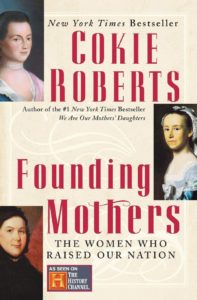
|
By Cokie Roberts, Founding Mothers (Harper Perennial, 2005) is an account of the women of the American Revolution, much of it based on letters and diaries. The result is a very human and entertaining account of the lives and achievements of such women as Eliza Lucas Pinckney, Abigail Adams, Mercy Otis Warren, Martha Washington, Sally Jay (and more). For teenagers and adults. |
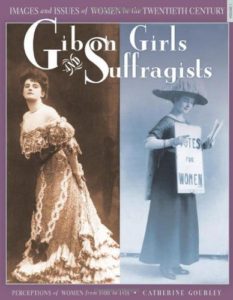
|
Titles in Catherine Gourley’s well-done Images and Issues of Women in the Twentieth Century series (Twenty-First Century Books, 2007) include Gibson Girls and Suffragists; Flappers and the New American Woman; Rosie and Mrs. America; Gidgets and Women Warriors; and Ms. and the Material Girls. Each is a catchy 150-page social history of the era, illustrated with dozens of period photographs. For ages 13 and up. |
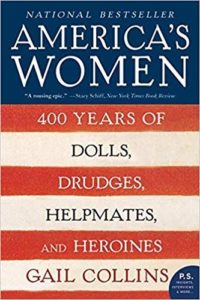
|
By Gail Collins, the best-selling America’s Women: 400 Years of Dolls, Drudges, Helpmates, and Heroines (William Morrow, 2007) is a well-researched and thoroughly interesting history of women in America, from Roanoke’s Virginia Dare to the turbulent 1960s and 70s. Chapter titles include “The Women of New England: Goodwives, Heretics, Indian Captives, and Witches,” “African American Women: Life in Bondage,” “Reforming the World: Suffrage, Temperance, and Other Causes,” and “World War II: She’s Making History, Working for Victory.” Learn about tobacco brides, Civil War spies, and Rosie the Riveter. For teenagers and adults. |
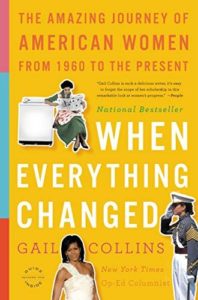 |
Also by Gail Collins, see When Everything Changed: The Amazing Journey of American Women from 1960 to the Present (Little, Brown and Company, 2009), which covers the history of American women from June Cleaver to Sandra Day O’Connor and Hillary Clinton. For teenagers and adults. |
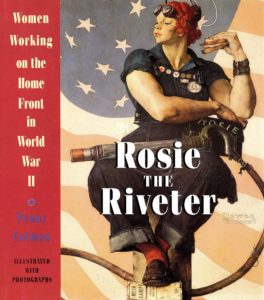
|
Penny Colman’s award-winning Rosie the Riveter (Crown Books for Young Readers, 1998) is an account of women in the work force during World War II. The narrative combines human interest, first-hand accounts, and historical facts with terrific period photographs. Appendices provide a timeline, a list of women’s (many) wartime jobs, and facts and figures. For ages 10 and up. |
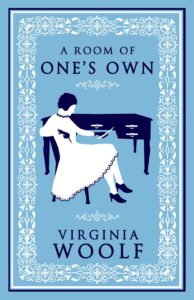 |
Virginia Woolf’s famous feminist essay, A Room of One’s Own, based on a pair of lectures on women in fiction delivered by the author in 1928, argues that women need education and financial freedom in order to write. Shakespeare’s sister, Woolf points out, might have been “as adventurous, as imaginative, as agog to see the world as he was. But she was not sent to school.” The essay has been published in several print editions; the complete text is also available online. For ages 13 and up. |
| From Fordham University, the Women’s History Sourcebook is a superb online collection of primary documents, secondary discussions, images, and links to “sites of serious educational value.” A large and excellent resource for women’s history from ancient times to the present. | |
| From Smithsonian Education, Women’s History Teaching Resources has photo and portrait galleries of famous women, lesson plans, activities, essays, and online features on women inventors, women in aviation and space, African American women, Native American women, and the Seneca Falls Convention. | |
| The National Women’s History Alliance has information and resources for National Women’s History Month and an online store offering women’s history books and materials. | |
| From TeacherVision, Women’s History – Teacher Resources has slideshows of famous women, printable quizzes, coloring pages, teacher’s guides, hands-on activities, and categorized lesson plans on women’s rights and suffrage, and women’s history as it connects to language arts, mathematics, science, art, physical education, and music. |
